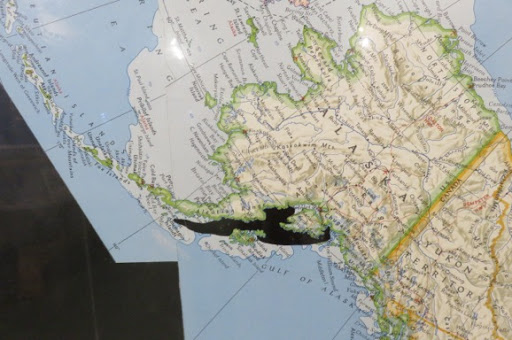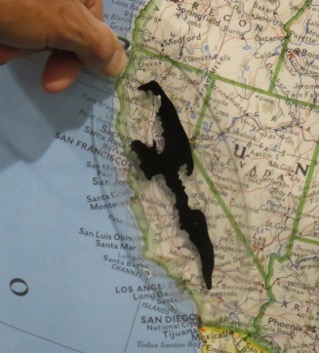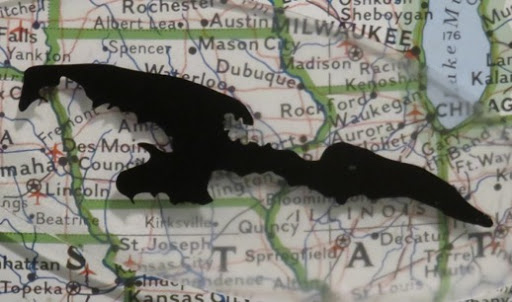A real double whammy over the last 50 years: one natural whammy - an earthquake which devestated the town and then a man-made whammy - an oil spill which did the same thing. But the town has survived.
On March 24, 1989, the oil tanker Exxon Valdez had filled up with oil from the Valdez terminal, and was heading out to sea when it struck a reef, tore a hole in its hull and released 11,000,000 gallons of oil. Exxon and Alyeska Pipeline Company didn’t act fast enough to contain the spill and, when a storm blew in, the oil was spread widely through out Prince William Sound. Eventually, more than 1,000 miles of coastline were covered with oil, fishermen were put out of work, businesses in Valdez lost millions of dollars and hundreds of thousands of animals and birds perished. Exxon ended up paying billions in cleanup costs and fines. The captain, Joseph Hazelwood, was acquitted of being intoxicated while at the helm, but convicted on a misdemeanor charge of negligent discharge of oil, fined $50,000, and sentenced to 1,000 hours of community service. Though the oil has mostly disappeared from view, many Alaskan beaches remain polluted to this day, crude oil buried just inches below the surface.
We saw this little demostration in the Homer, AK museum. It had a black cut-out the size and shape of the oil spill in Valdez harbor and you could put it anywhere on a US map to see how large it was.
Below Gary holds it over the state of California almost from top to bottom and then over the state of Iowa. This was a large spill.






I can show you pictures about the disasters and manh of its effects. What I can’t show you is the economic effects: how many fishermen were out of work, how many familes faced bankruptcy, how many town businesses failed. Ironically, many of the out-of-work fishermen obtained jobs in the oil clean-up paid for by Exxon. Many did not take these jobs because they didn’t want to take Exxon money.
The Exxon Valdez was prohibited from sailing through this area but it had severeal new owners, changed names several times but collided with another freighter and finally beached in India for dismantling.
This oil spill is the largest in America but fell off the list of the top 50 world-wide back in 1989. However, it is still considered the most damaging to the environment because it happened in such a remote location with thousands of miles of seashore, where there is so much wildlife.
I understand that you can still find oil on the beaches and waters of Prince William Sound, that not all species have recovered fully, that some have died out, that some have never returned to this area. However, fishermen have gone back to the seas, businesses have recovered and Valdez survived.

No comments:
Post a Comment